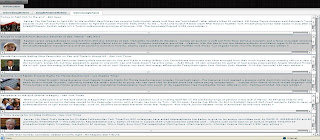svn add - Add files and directories to your working copy and schedule them for addition to the repository. They will be uploaded and added to the repository on your next commit.
svn add --non-recursive testDir - You can add a directory without adding its contents
svn add * --force - If you want to add every unversioned object in your working copy
svn update
svn up | svn update - Update your working copy.
svn up -r8000 update your working copy to an older revision (revision 8000)
svn checkout
svn co | svn checkout - Check out a working copy from a repository.
svn co https://wso2.org/repos/wso2
svn delete
svn del | svn delete - Delete an item from a working copy or the repository.
svn del testDir
svn mkdir
svn mkdir - Create a new directory under version control.
svn mkdir testDir
svn commit
svn ci | svn commit - Send changes from your working copy to the repository.
svn ci -m "Added new functionality."
svn move
svn move | svn mv — Move a file or directory
$svn mv parentDir/test.txt parentDir/subDir
A parentDir/subDir/test.txt
D parentDir/test.txt
svn cleanup
svn cleanup - Recursively clean up the working copy, removing locks resuming unfinished operations. If you ever get a “working copy locked” error, run this command to remove stale locks and get your working copy into a usable state again.
svn blame — Show author and revision information in-line for the specified files or URLs. (This is only for files)
svn blame https://wso2.org/repos/wso2/trunk/carbon/core/samples/pom.xml
15686 saminda <project xmlns="http://maven.apache.org">
15686 saminda <groupId>org.wso2.carbon</groupId>
15686 saminda <artifactId>carbon-parent</artifactId>
72444 ruwan <version>3.1.0-SNAPSHOT</version>
15686 ruwan <modelVersion>4.0.0</modelVersion>
15686 saminda <artifactId>samples</artifactId>
15686 saminda <packaging>pom</packaging>
15686 saminda <name>samples</name>
15686 saminda <description>samples</description>
15686 saminda <url>http://wso2.org</url>
15687 saminda <module>org.wso2.carbon.sample</module>
svn diff
svn diff - Display the differences between two paths.
svn diff trunkDir - Compare repository and your working copy.
svn diff -r 3900 trunkDir - working copy's modifications compare against an older revision
svn diff https://wso2.org/repos/wso2/trunk/carbon/pom.xml@3000 https://wso2.org/repos/wso2/trunk/carbon/pom.xml@3010 - Compare revision 3000 to revision 3010 using “@” syntax
svn cat
svn cat - Output the contents of the specified files or URLs.
$svn cat https://wso2.org/repos/wso2/trunk/test/readme.txt - you can view readme.txt in your repository without checking it out
svn log
svn log - Display commit log messages.
svn log - sample log is shown below.
------------------------------------------------------------------------
r121 | pradeeban | 2010-10-17 01:13:37 +0530 (Sun, 17 Oct 2010) | 2 lines
Applying the patch for ARCHITECTURE-25 provided by kasunw. BPS loan approval demo was added with necessary documentation with minor change to Account Service client, in this patch.
------------------------------------------------------------------------
r119 | lahiru | 2010-10-16 23:09:01 +0530 (Sat, 16 Oct 2010) | 2 lines
applying patch from kasun for https://wso2.org/jira/secure/ManageAttachments.jspa?id=25441.
------------------------------------------------------------------------
r118 | lahiru | 2010-10-16 23:07:56 +0530 (Sat, 16 Oct 2010) | 2 lines
applying patch from kasun.
------------------------------------------------------------------------
r117 | lahiru | 2010-10-16 22:42:04 +0530 (Sat, 16 Oct 2010) | 2 lines
adding patch given by kasun.
------------------------------------------------------------------------
r116 | kasunw | 2010-10-15 00:44:58 +0530 (Fri, 15 Oct 2010) | 2 lines
changes to platform demo, using carbon studio, and minor feature adding like automating using ant.
svn revert
svn revert - Undo all local edits.
svn revert foo.java
svn revert testDir --recursive - If you want to revert a whole directory of files, use the --recursive flag.
svn resolved
svn resolved - Once you've resolved the conflict, run svn resolved to let your working copy know you've taken care of everything
svn list
svn list - List directory entries in the repository.
svn list https://wso2.org/repos/wso2/trunk/carbon
components/
core/
dependencies/
features/
orbit/
pom.xml
products/











